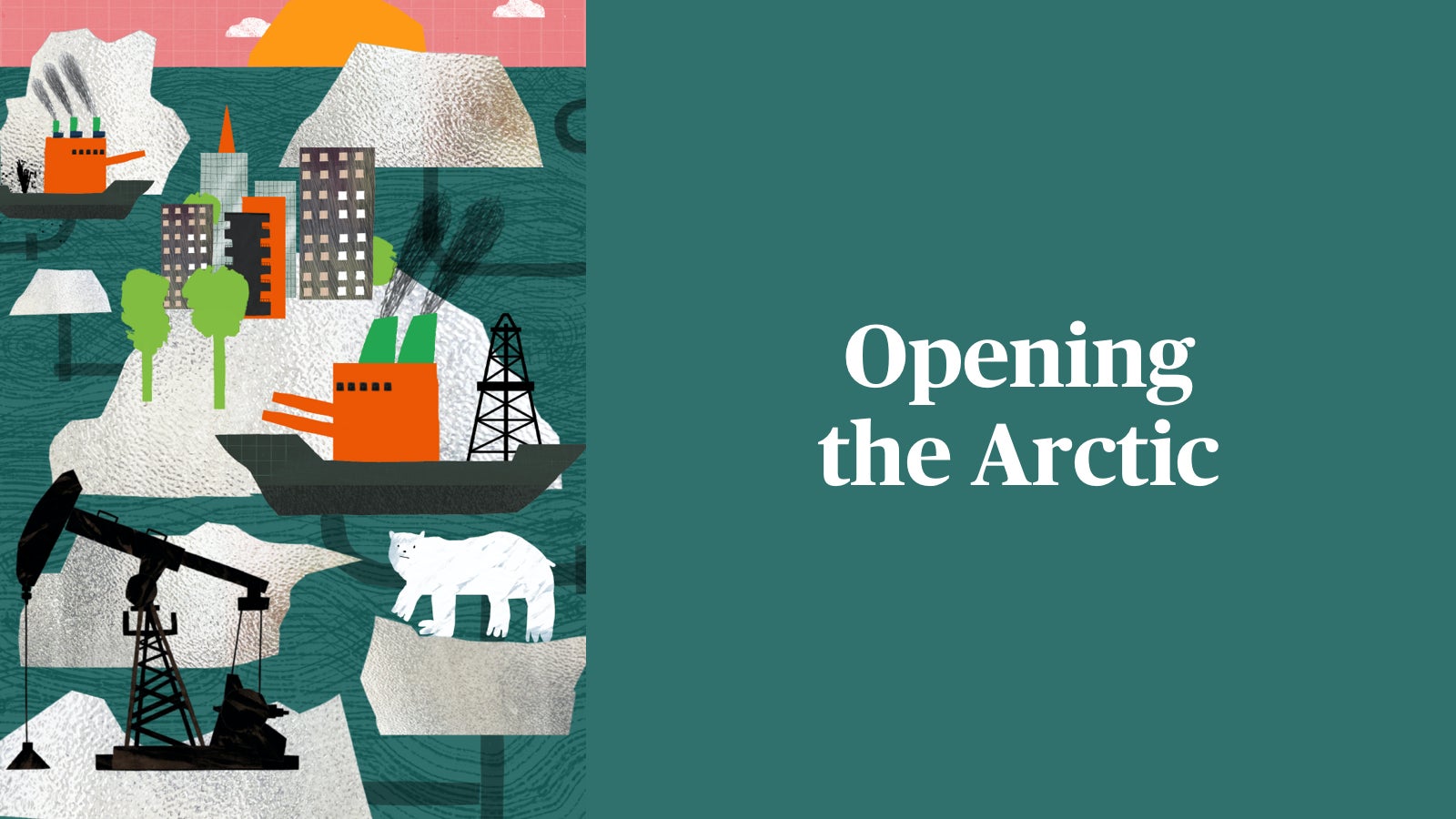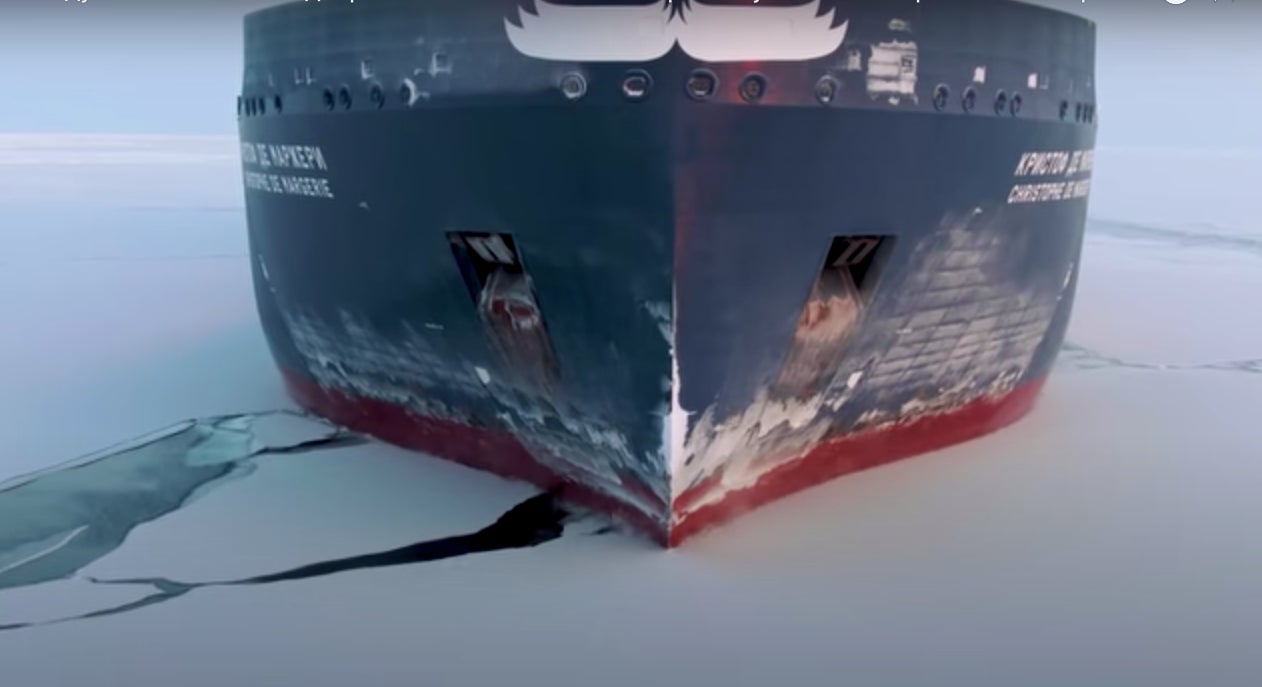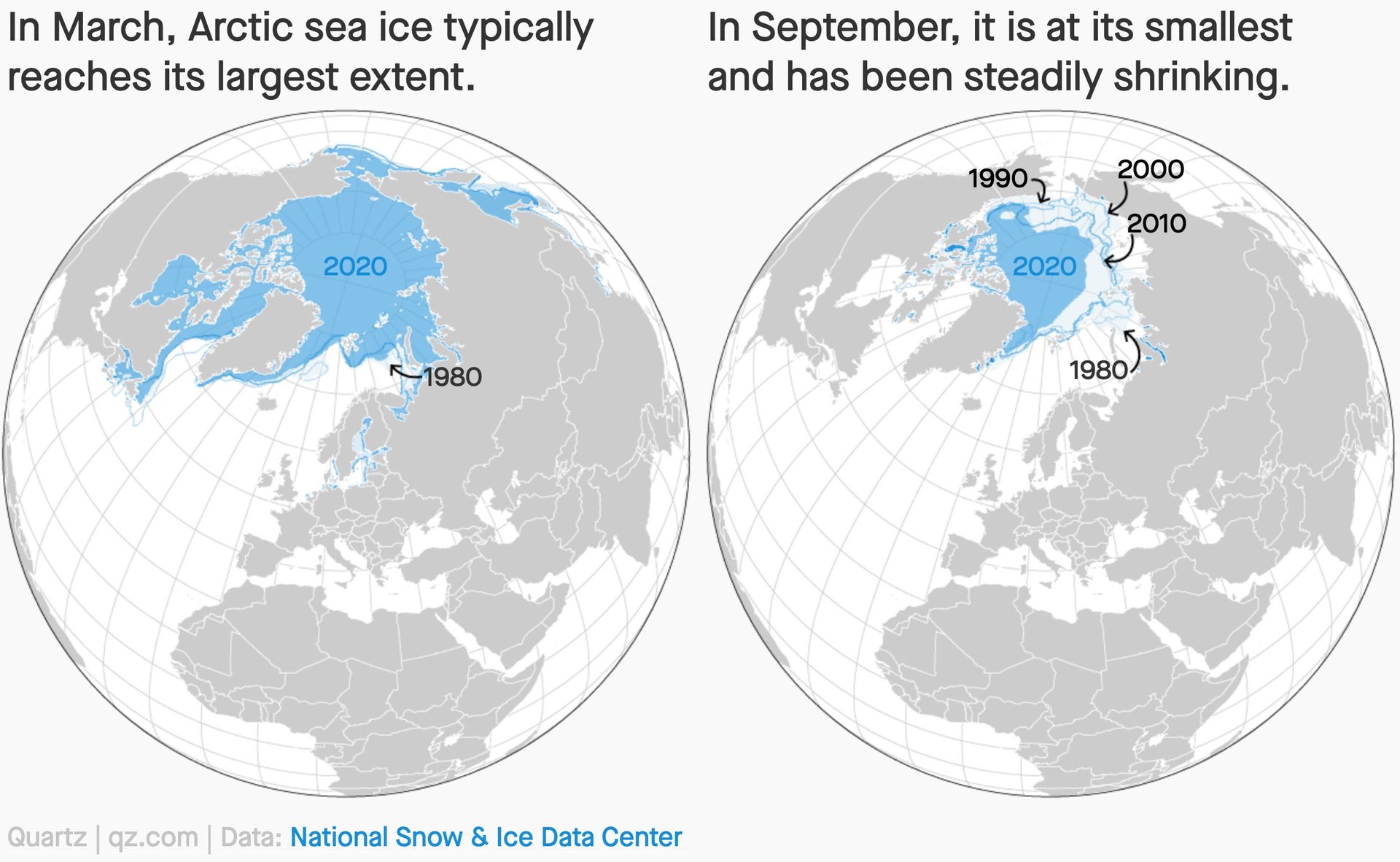For members—Opening the Arctic
[qz-guide-hero id=”434624201″ title=”💡 The Big Idea” description=”The melting Arctic will open up new business opportunities, and new environmental risks.”]


[qz-guide-hero id=”434624201″ title=”💡 The Big Idea” description=”The melting Arctic will open up new business opportunities, and new environmental risks.”]
By the digits
8 degrees Celsius: Amount above average air temperatures measured on the coast of Russia’s Laptev Sea in Sept. 2020
25%: Volume of sea ice in the Arctic today compared to 40 years ago
4 million: People who live in the Arctic
90 billion: Barrels of oil thought to lie untapped in the Arctic, mostly offshore
4,000 km (2,500 mi): Length by which an Europe-Asia shipping trip using the Northwest Passage route is shorter than the southern route through the Panama Canal
$200,000: Approximate savings from the shorter distance
62: Full ship transits of the Northern Sea Route in 2020, up from 37 the year before
The billion-dollar question
Who owns the Arctic?
The Arctic is bordered by eight independent countries—Russia, Canada, Denmark, Norway, the US, China, Iceland, and Greenland. Each is able to claim the waters off its coasts and the resources beneath. Everything else is covered by a patchwork of regulations, particularly the United Nations Convention on the Law of the Sea.
Companies are eyeing the Arctic as a place to extract natural resources like rare earth metals, oil, and natural gas. Many of these companies are so large, and so often state-owned, that they serve as proxies for their governments, their narrow industrial interests providing a cover for their states’ projections of power.
One big number
<1 million square kilometers
The amount of ice measured in September for the Arctic to be declared “ice-free.” Current climate projections show that moment arriving sometime around 2050. But scientists worry that it may come sooner since many models don’t incorporate possible factors like melt ponds and waves.
Watch this!
Ordinarily, in January, the waters of the Arctic ought to be encrusted with thick, daunting ice, the kind that resists nearly every ship on earth. This past January, though, the Christophe de Margerie sailed the Arctic herself. In 11 days, the de Margerie reached the Chinese port of Jiangsu, not far from Shanghai, where she emptied herself of the liquefied natural gas she carried; then she sailed home, east first and then north, back through the Bering Sea and along the Northern Sea Route. Video footage of the voyage makes the de Margerie look elegant but spooky: a ship that appears to glide on frozen land, until the ice cracks to reveal the water beneath.

The journey was unprecedented. In bygone times, the Northern Sea Route was navigable only from July to November, but the changing climate has both prolonged the sailing season and shrunk the ice cover in the deepest part of winter. The de Margerie’s journey proved that the Arctic is already open for business year-round—”that year-round safe navigation is possible along the entire length of the Northern Sea Route,” said Igor Tonkovidov, the president of Sovcomflot, which ran the de Margerie on its voyage.
Quotable
“I think it’ll all work fine—until it doesn’t. If something were to unfold—let’s say if China were to militarily do something in the Arctic—we’d respond appropriately. We’ve got all of the What Ifs worked out.”
—An anonymous official delegated by his government to a task force of the Arctic Council, a loose, independent forum
Commonly held question
What will happen to people living in the Arctic?
Four million people live in the Arctic already: indigenous communities, township residents, hunters, herders.
Their lives are already in flux as the planet warms. They struggle to fish and hunt on thinning ice. Waves of new economic activity will only make matters worse. Shipping emissions will contaminate the soil and water upon which they survive. New arrivals will threaten their way of life; the Russian government is trying to entice people from elsewhere to migrate to eastern Russia to grow food in the newly thawed soil, while townships built around new oil and gas plants or new ports will attract workers. And unfortunately, it’s unlikely they’ll be consulted during these seismic changes—they’ll have to fight to be heard, or may be forced to move to larger cities to survive.
📣 Sound off
Do you think the opening of the Arctic is good or bad on balance?
In last week’s poll about in-person shopping, 71% of respondents said they’ll for sure be buying some things in person in the future. We get it—the internet can’t help you try on jeans quite yet.
